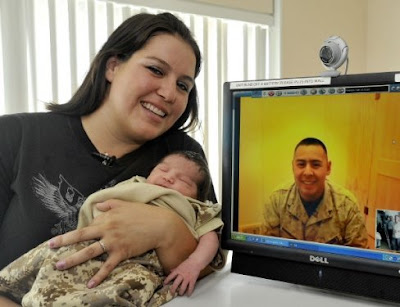Informed agencies use social media to brainstorm without exposing secrets.Original Story From NextGov.com Great ideas often get trapped in federal bureaucracies, but cutting-edge agencies are tapping into next-gen Web technology as the key to unlocking the power of information sharing.
Great ideas often get trapped in federal bureaucracies, but cutting-edge agencies are tapping into next-gen Web technology as the key to unlocking the power of information sharing.
Government chief information officers, public affairs offices and knowledge management shops are embracing social media tools to foster idea sharing, enhance collaboration with other agencies and engage the public.
But these online communities have inherent risks, so agencies must strike the right balance between opening up their operations widely and safeguarding sensitive information. Those with the most successful social media applications are taking various steps to protect information, such as assigning moderators.
The Transportation Security Administration, for example, has three moderators who monitor the conversations on its Idea Factory, an online suggestion forum that 43,000 airport security officers and headquarters staff use. TSA launched the Idea Factory on its intranet in April 2007.
"We have people who moderate the tool because there may be sensitive information shared, and we also moderate it for foul language," says Lynn Dean, TSA's manager of strategy and Web communications.
Idea Factory users, who are identified by name, must adhere to terms of use to ensure online conversations are respectful.
"Employees can include sensitive security information. This gives them the ability to really talk about the work they do," Dean says. "But let's say a person forgets to mark a comment as Secret Sensitive Information.
Someone else can report that and say it's SSI." Idea Factory participants provide suggestions for improving their jobs, saving money or handling difficult situations with passengers. So far, they have submitted 7,000 ideas to the system, which ranks them based on popularity. A review panel determines whether they can be implemented.
TSA has adopted 20 proposals from the Idea Factory, including a more efficient way of scanning cremated remains at the nation's 450 airports. Agency managers conduct contests on the online forum when they want to solve particular problems, and they reward employees who win these challenges.
Dean says the return on the investment is an empowered workforce. In a recent TSA survey, 66 percent of respondents said the Idea Factory was important, and 36 percent said they visit it multiple times every month.
"Our head of security operations will get on the tool and say, 'This is a great idea.' Now our workforce isn't just talking among themselves, they're talking to people higher up," Dean says. "It makes them feel valued, and it leverages their know-how and experience."
Monitoring social media tools becomes more important when they are open to the public, early adopters say. That's why TSA has five moderators for its Evolution of Security blog, launched in January as a way to communicate airport security information to the public.
When it was launched, the blog received 2,000 comments, questions and complaints. Now the site averages 50 to 100 comments per post. Each week, TSA files two or three blog posts, which are screened through public affairs.
"The goal with the blog is to explain why we do what we do. There are a lot of common misperceptions and outright myths that are hard to debunk," Dean says. "We also wanted to humanize our workforce. The officers in the field can chime in to answer questions like why we are making you take your shoes off."
The moderators delete public comments that are profane, threatening, abusive or duplicative. Early adopters like TSA embraced social media two years ago, and their sites are gaining popularity across government. The National Academy of Public Administration has identified 20 federal examples of Web 2.0 tools, including wikis, blogs, comment forums and social ranking applications.
Lena Trudeau, program area director for NAPA, says a major challenge for agencies planning to deploy social media tools is the multiple regulations that govern information dissemination. "We've done a lot of research into these regulations.
Whether they are procurement regulations or accessibility concerns or security concerns or records management or persistent cookies, these issues can limit the ability of some federal Web sites to behave in the same way as their commercial counterparts," Trudeau says, adding these risks shouldn't prevent agencies from adopting social media. "There are ways to look at these things . . . and figure out a best path forward."
The Air Force has found a way to get around information security concerns with Knowledge Now, an online community for the military that provides discussion forums, blogs, wikis, comment capabilities, rating systems and user pages.
Launched in 2002, Air Force Knowledge Now has 294,000 registered users, 60 percent of whom log in to the system at least once a month. "There's a misconception that only the millennial generation and younger are using these social media tools, and that is absolutely not true," says Randy Adkins, director of the Air Force Center of Excellence for Knowledge Management at Wright-Patterson Air Force Base in Ohio. "More than 70 percent of the colonels in the Air Force are registered, and these are not young people. And 80 percent of the chief master sergeants, the senior enlisted rank, have accounts. . . .Why is that? Senior folks are the ones with knowledge, and they need to share that information."
Use of Air Force Knowledge Now has exploded, growing nearly tenfold in the past three years. Military and civilian employees as well as contractors viewed more than 10 million Web pages on the site in January.
Adkins says Air Force Knowledge Now is popular because it enhances productivity more than other forms of communication, such as the telephone and e-mail.
For example, the 1st Special Operations Maintenance Group Training Community on Air Force Knowledge Now disseminates 25 required training courses to 2,600 personnel worldwide. The Air Force estimates it is saving at least 6,000 employee hours annually because of the efficiencies gained through this one-stop shop for combat maintenance training.
"The return on investment is time savings . . . it's also the ability to get information that you wouldn't have access to otherwise," Adkins says. "It makes you smarter."
Air Force Knowledge Now runs on the Defense Department's nonsecure Internet backbone, known as NIPRNET. Users log in through the Air Force's Web portal.
"We have integrated identity management, and that's what allows you to get into your online community," Adkins says. "A user might be doing some work on the internet in Iraq and need some folks from the Treasury Department to participate in a virtual workspace.
As long as we're able to get them Air Force portal accounts, they can participate in Knowledge Now." The Air Force Knowledge Now community polices Web postings and helps keep the information on the site accurate and secure, though Adkins acknowledges that one of the biggest concerns about the site is that it will foster security breaches.
"The whole philosophy is very much Web 2.0, and senior leaders in the Air Force had to get used to the idea of somebody posting something online that's incorrect," he says. "My response is that they are going to post it in a community of 50 people, and if some of those 50 people think the information is wrong, they are going to tell them."
Moderators can't prevent security mistakes from happening online, Adkins says. Each community on the Air Force forum has a knowledge owner who is responsible for protecting information shared within that group and determining users' level of access.
Adkins doesn't recommend that knowledge owners act as gatekeepers to approve content before it is posted. "Air Force personnel get lots of training on security and information assurance," he says. "We reinforce that but also rely on that, and the professionalism of our workforce."
Adelaide O'Brien, research manager with Falls Church, Va., IT consulting firm Government Insights, says federal use of social media is spotty, particularly in communicating with the public.
More agencies, like the Air Force, have deployed these tools on their internal Web sites than on the public Internet.
"Some agencies have deployed RSS feeds so they can push information out to constituents of interest. Some of them have looked at YouTube videos," she says. But these tools aren't "consistently deployed so the citizens get the same experience from agency to agency."
The Obama administration's focus on open and transparent government indicates that social media isn't going to be restricted to tech-savvy early adopters. Many observers now say embracing social media eventually will be a requirement for everyone in the federal government.
"Based on what we saw during the campaign, the Obama team really believes in the democratization of data and all-around transparency and accountability," O'Brien says. "What we anticipate is that Government 2.0 will not be optional for federal agencies."
 The discussions are a gambit by Microsoft Chief Executive Steve Ballmer to energize a mobile business that has lost buzz among consumers and software developers to Apple's iPhone and Google Inc.'s Android.
The discussions are a gambit by Microsoft Chief Executive Steve Ballmer to energize a mobile business that has lost buzz among consumers and software developers to Apple's iPhone and Google Inc.'s Android. The Microsoft-Verizon relationship is evolving from a search-and-advertising partnership the companies struck early this year. The companies have been working on the Pink project for several months, but haven't yet decided key details such as how the device would be branded, one person familiar with the situation said.
The Microsoft-Verizon relationship is evolving from a search-and-advertising partnership the companies struck early this year. The companies have been working on the Pink project for several months, but haven't yet decided key details such as how the device would be branded, one person familiar with the situation said.










